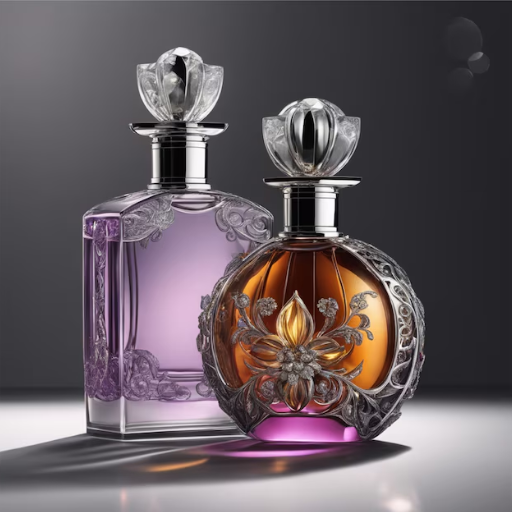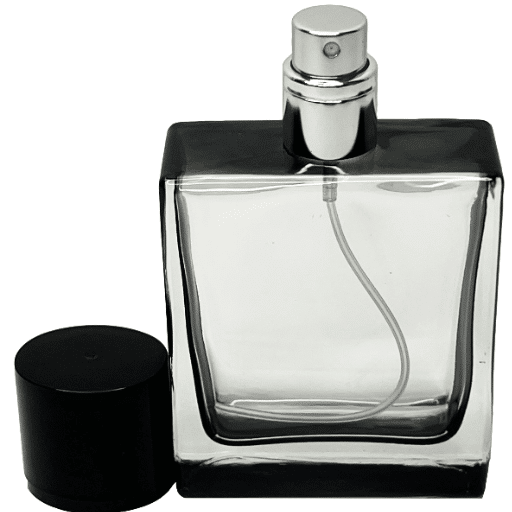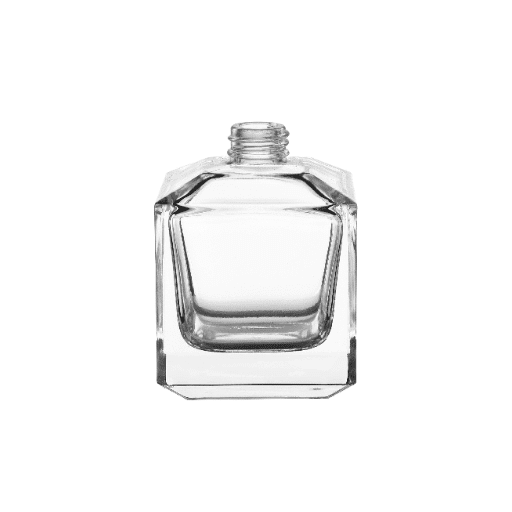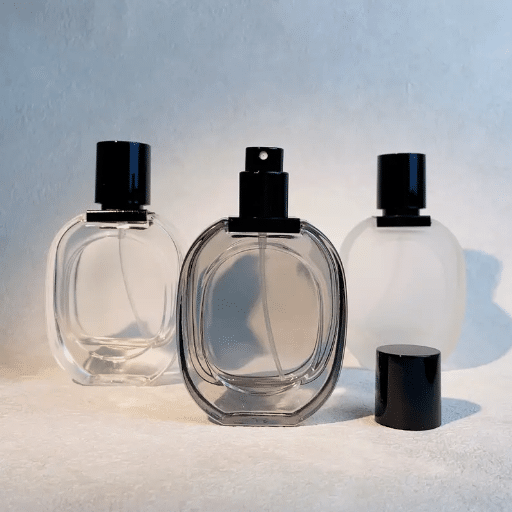The world of luxury perfume bottles is a captivating intersection of artistry, innovation, and meticulous craftsmanship. These vessels are far more than mere containers; they are intricate masterpieces designed to complement and elevate the olfactory experience they hold within. This blog post takes you on a fascinating exploration of how skilled artisans and visionary designers collaborate to craft perfume bottles that transcend functionality, becoming icons of elegance and sophistication. From the choice of premium materials to the application of advanced techniques and timeless aesthetics, discover the intricate processes that transform these objects into true symbols of luxury. Whether you’re an enthusiast of fine fragrances or a connoisseur of high-end design, this article will unravel the secrets behind the artistry and ingenuity of exquisite perfume bottles.
What Makes a Perfume Bottle Luxurious?

Luxury in a perfume bottle is defined by a combination of exceptional craftsmanship, premium materials, and thoughtful design. High-quality materials, such as crystal, hand-polished glass, or fine metals, establish a sense of refinement. Intricate detailing, such as engraving or artistic elements, adds uniqueness and character. Additionally, the design must balance aesthetics with practicality, ensuring the bottle is both visually appealing and functional. These elements come together to create a bottle that not only protects the fragrance but also serves as an enduring symbol of elegance.
Understanding Perfume Bottle Design
Perfume bottle design integrates elements of artistic aesthetics, material sustainability, and functional innovation. According to leading sources, designers focus on creating bottles that visually communicate the essence of the fragrance through colors, shapes, and textures. High-end designs often involve durable materials like glass or recyclable plastics, emphasizing eco-friendly practices. Functionality is equally critical, ensuring ease of use with ergonomic components, such as spray nozzles and secure caps, while preventing product degradation. The combination of creativity, practicality, and environmental consideration defines modern perfume bottle design standards.
The Role of Fragrance in Luxury Perfume Bottles
- Enhancing the Overall Experience: The fragrance encapsulated within luxury perfume bottles serves as the core element that evokes emotions, memories, and sensory experiences, complementing the visual and tactile appeal of the bottle itself.
- Defining Brand Identity: Each fragrance is meticulously crafted to reflect the unique values, story, and aesthetic vision of the brand, reinforcing its identity through signature scents.
- Targeting Specific Audiences: Luxury fragrances are designed with specific demographics in mind, tailoring scent profiles to appeal to particular tastes and cultural nuances.
- Elevating Perceived Value: The complexity and quality of a fragrance contribute significantly to the perceived value of the product, aligning with high-end branding and justifying premium pricing.
- Establishing Longevity in the Market: A well-balanced and memorable fragrance ensures brand loyalty, fostering a long-lasting presence in a highly competitive market.
Exploring Customized Perfume Bottles
Customized perfume bottles play a vital role in enhancing brand identity, consumer appeal, and market differentiation. These bespoke designs allow brands to craft a visual representation that aligns with their unique ethos and target audience. High-end customization often incorporates innovative materials, intricate detailing, and ergonomic designs to balance aesthetics with functionality. Additionally, sustainability is becoming a central focus, with manufacturers integrating eco-friendly materials such as recycled glass or biodegradable components to meet growing environmental concerns. Such designs not only elevate the perceived value of the fragrance but also resonate with modern consumer preferences for responsible and luxurious packaging. By carefully tailoring the bottle’s appearance and usability, brands can solidify their positioning and create a lasting impression in a competitive marketplace.
How are Glass Perfume Bottles Manufactured?

Glass perfume bottles are manufactured through a process that combines precision and artistry. The process begins with the melting of raw materials, primarily silica sand, soda ash, and limestone, in a furnace at extremely high temperatures. Once the molten glass reaches the desired consistency, it is shaped using molds through either the blow-and-blow or press-and-blow method, depending on the desired design and thickness. After shaping, the bottles are annealed in a controlled cooling chamber to relieve stress and enhance durability. Surface treatments, such as polishing or frosting, and decorative elements like embossing or coloring are applied to achieve the final aesthetic. Every stage of production is meticulously monitored to ensure the bottles meet strict quality and safety standards, resulting in functional and visually striking containers for fragrances.
The Process of Glass Bottle Production
Glass bottle production involves several precise and well-regulated stages to ensure quality and efficiency. The process begins with the preparation of raw materials, primarily silica sand, soda ash, and limestone, which are melted in high-temperature furnaces. Once the molten glass reaches a homogeneous and workable state, it is shaped using molding techniques or via blow-and-blow or press-and-blow processes to form desired bottle shapes. After forming, bottles undergo annealing, a controlled cooling stage to alleviate internal stresses within the glass. To enhance durability and safety, surface treatments such as strengthening coatings are applied. Finally, the bottles are inspected for quality, ensuring they meet strict industry standards for functionality and design before being distributed.
Innovations in Perfume Bottle Manufacturing
Recent innovations in perfume bottle manufacturing have focused on sustainability, precision, and design enhancements. Many manufacturers are adopting eco-friendly practices such as using recycled glass and reducing energy consumption during production. Advanced molding techniques now allow for intricate designs and thinner, lightweight bottles without compromising structural integrity. Additionally, digital technologies, like 3D printing and computer-aided design (CAD), enable rapid prototyping and highly detailed customization. These advancements not only improve efficiency but also cater to evolving consumer demands for sustainability and aesthetic excellence.
The Significance of Custom Glass in Bottle Design
Custom glass bottle design plays a critical role in enhancing a product’s marketability by combining functionality, sustainability, and branding. Unlike standardized bottles, custom-designed glass allows for tailored shapes, sizes, and aesthetics that align with a brand’s identity, helping to establish a stronger presence on store shelves. The use of custom glass offers superior durability, preserving the integrity of the product against environmental factors while maintaining a premium look and feel.
From a technical perspective, custom glass bottles provide the flexibility to incorporate specialized features such as embossed logos, unique textures, and intricate patterns that increase brand recognition. This approach is particularly valuable in competitive industries like beverages, cosmetics, and luxury goods, where differentiation is key. Furthermore, advancements in manufacturing enable the production of lightweight, eco-friendly glass bottles, reducing material usage and lowering carbon footprints without compromising quality or design precision.
Sustainability is another critical factor driving the rise of custom glass in bottle design. Glass is 100% recyclable, and many manufacturers now prioritize recycled material in production, promoting a circular economy. This aligns with consumer demand for eco-conscious packaging, making custom glass not just an aesthetic choice but also an ethical one. These attributes ensure that custom glass bottle designs not only meet functional needs but also address evolving industry priorities in an environmentally and market-focused manner.
What Should You Look for in a Perfume Bottle Manufacturer?

When selecting a perfume bottle manufacturer, prioritize a company with expertise in custom designs and high-quality materials to ensure the final product aligns with your brand’s vision and standards. Assess their production capabilities, including adherence to sustainability practices and the use of recyclable or eco-friendly materials. Verify their ability to meet your volume requirements and timelines while maintaining precision and consistency. Additionally, strong communication, client support, and competitive pricing are essential factors in establishing a reliable partnership.
Identifying a Trusted Perfume Bottle Supplier
When identifying a trusted perfume bottle supplier, I focus on several key aspects to ensure the supplier aligns with my expectations. First, I evaluate their portfolio to confirm they offer high-quality, customizable designs that suit my brand identity. I also assess their production capabilities, prioritizing those with sustainable practices and eco-friendly material usage, as these align with modern consumer and environmental demands. To ensure efficiency, I verify their ability to meet large-scale volume requirements without compromising on delivery timelines or product consistency. Additionally, I prioritize suppliers who demonstrate robust communication and client support, as this ensures smooth coordination throughout the partnership. Lastly, I compare pricing structures to confirm competitive rates while maintaining quality and reliability. These considerations holistically guide my supplier selection process.
Assessing Production Capabilities
To assess production capabilities effectively, I start by evaluating the supplier’s manufacturing infrastructure, including their equipment sophistication, production processes, and factory capacity. I also analyze their ability to scale operations, ensuring they can handle fluctuating demand without sacrificing quality. Furthermore, I review case studies or references that demonstrate their past performance in delivering large orders within strict timelines. These insights provide a comprehensive understanding of whether a supplier can consistently meet production requirements.
Evaluating Packaging Solutions
When evaluating packaging solutions, I prioritize sustainability, cost-effectiveness, and durability. I assess whether the materials used are environmentally friendly, such as recyclable or biodegradable options, while ensuring they meet the functional requirements of protecting the product during transit. Additionally, I consider the total cost implications, including production, shipping, and storage expenses. I also analyze how well the packaging aligns with branding and consumer expectations, ensuring it enhances product appeal while staying compliant with regulatory standards. These factors collectively guide my decision-making process for selecting the most suitable packaging solutions.
Why Choose Glass Perfume Bottles?

Glass perfume bottles are a superior choice due to their durability, impermeability, and ability to preserve fragrance quality. Unlike plastic, glass is non-reactive, preventing any chemical interactions with the perfume that could alter its scent. Additionally, glass offers a premium, high-end aesthetic that enhances brand perception and appeals to consumers seeking luxury. Its recyclability also aligns with sustainability goals, making it an eco-friendly option for environmentally conscious brands and customers.
Benefits of Using Glass Bottle for Perfume
1.Non-Reactive Material – Glass is chemically inert, ensuring that the perfume’s composition and scent remain unaltered over time.
2.Superior Barrier Properties – Glass provides an excellent barrier against oxygen and moisture, preserving the fragrance’s integrity and longevity.
3.Aesthetic Appeal – Glass bottles offer a luxurious and high-end appearance, elevating the product’s overall packaging and brand image.
4.Sustainability – Fully recyclable and endlessly reusable, glass supports environmental sustainability efforts and appeals to eco-conscious customers.
5.Enhanced Fragrance Stability – Glass minimizes the risk of external contamination or evaporation, maintaining the perfume’s intended quality and potency.
Comparing Clear Glass vs. Colored Glass Perfume Bottles
Clear glass bottles excel at showcasing the true appearance of the perfume, while colored glass bottles offer superior protection against UV light and aesthetic versatility.
|
Parameter |
Clear Glass |
Colored Glass |
|---|---|---|
|
Visibility |
Full transparency |
Limited transparency |
|
UV Protection |
Minimal |
High |
|
Aesthetic |
Simple and elegant |
Customizable design |
|
Fragrance Stability |
Moderate |
Superior |
|
Market Positioning |
Classic appeal |
Premium/luxury |
Environmental Impact of Glass Packaging
Glass packaging offers a range of environmental advantages, particularly due to its recyclability and inert nature. Structurally, glass is 100% recyclable without degradation in quality, meaning it can be reused indefinitely in the production of new glass containers. This closed-loop system significantly reduces the consumption of raw materials such as sand, soda ash, and limestone, while also minimizing energy use during manufacturing. According to industry data, recycling glass requires approximately 30% less energy compared to producing new glass from raw materials.
Furthermore, glass packaging is inert, meaning it does not release harmful chemicals or microplastics into the environment, unlike some plastic alternatives. This maintains the purity of products stored within and reduces the long-term environmental burden. However, it is important to note that the production of glass is energy-intensive, largely due to the high temperatures required for its creation, which contribute to carbon dioxide emissions.
From a technical perspective, recycled content percentages play a crucial role in determining the sustainability of glass packaging. For instance, an increased percentage of cullets (crushed recycled glass) in production can drastically reduce energy use and emissions. Incorporating 50% cullets can lower greenhouse gas emissions by approximately 10% while conserving raw materials. Additionally, lighter-weight glass innovations have emerged as a solution to reduce transportation emissions by reducing overall packaging weight.
While glass packaging is a sustainable option, its environmental performance strongly depends on efficient recycling programs and consumer participation in returning used materials. Thus, enhancing collection and recycling systems remains critical for maximizing the positive environmental impact of glass.
What Are the Emerging Trends in Perfume Bottle Design?

Perfume bottle design is increasingly focusing on sustainability, functionality, and aesthetic innovation. Lightweight glass bottles, which reduce material consumption and carbon emissions during production and transportation, are gaining traction. Additionally, recyclable materials such as glass and aluminum are being integrated into designs to align with eco-conscious consumer preferences. Customization and personalization have also become prominent trends, with brands offering refillable bottles and modular designs to extend product lifecycles. Advanced manufacturing techniques, such as 3D printing, are enabling intricate and unique designs that blend artistry with precision, catering to the demand for visually distinctive packaging. These trends are shaping the future of perfume bottle design, balancing environmental responsibility with luxury and creativity.
The Rise of Premium Glass Perfume Bottles
Premium glass perfume bottles have gained significant traction due to their inherent qualities of elegance, durability, and recyclability. These bottles convey a sense of sophistication and luxury, aligning with high-end branding strategies. Manufacturers are increasingly employing high-quality glass to ensure clarity and weight, enhancing the tactile and visual appeal of the product. Additionally, advancements in glass manufacturing have enabled intricate designs, from custom engravings to artistic shapes, that elevate the consumer experience. The eco-friendly nature of glass, being both reusable and recyclable, further positions it as a sustainable choice in a market that is evolving towards environmentally-conscious practices. This combination of aesthetic allure and functionality underscores the enduring popularity of premium glass perfume bottles.
Innovations in Perfume Packaging
Recent developments in perfume packaging are shaped by advancing technology, sustainability trends, and consumer preferences for unique and premium designs. Smart packaging solutions are emerging, integrating technologies like NFC (Near Field Communication) tags and QR codes that allow consumers to verify product authenticity, access detailed information about the fragrance, or interact with the brand through augmented reality experiences. These innovations enhance the user’s connection with the product while offering added security against counterfeiting.
Sustainability plays a pivotal role in modern perfume packaging innovations. Brands are adopting eco-conscious approaches, utilizing recycled materials, biodegradable components, and refillable systems. For example, refillable perfume bottles are becoming increasingly popular, allowing customers to reduce waste while maintaining a sense of luxury. Lightweight designs and minimalistic aesthetics also contribute to reducing the carbon footprint of packaging.
Additionally, custom packaging is at the forefront of innovation, with sophisticated designs and high-quality finishes appealing to consumers seeking exclusivity. Holographic patterns, intricate etching, and premium decorative elements are blending artistry with functionality to create a powerful brand statement. These advancements not only reflect the industry’s growing focus on aesthetics but also align with the evolving demands of consumers who value sustainability, authenticity, and personalized experiences.
Trends in High-End Fragrance Bottle Design
The design of luxury fragrance bottles continues to prioritize innovation and craftsmanship, emphasizing sustainability, personalization, and premium materials. Many brands are adopting refillable containers and recycled materials, aligning with the growing consumer demand for eco-friendly practices. Customization remains a key trend, with brands offering bespoke engraving, unique shapes, and limited-edition designs to enhance exclusivity. Additionally, the incorporation of advanced technologies, such as smart packaging with QR codes, creates an interactive user experience, blending tradition with modernity to captivate discerning customers. These elements collectively define the current trajectory of high-end fragrance bottle design.
Reference Sources
- The Art of the Perfume Bottle: A Journey Through Design, Craft, and Luxury – Harper’s Bazaar
- History of Perfume Bottles: A Time Line – Beautinow
- The History and Evolution of Perfume Bottles – FragranceX
- The Fascinating History of Perfume Bottles: From Ancient Times to Modern Luxury – Qui Talks
- Thousands of Years of Evolution of Perfume Bottle Design – Bi-Packaging
Frequently Asked Questions (FAQs)
Q: What factors should be considered when purchasing perfume bottles wholesale?
A: When purchasing perfume bottles wholesale, consider the design, material quality, closure type, and compatibility with your fragrance. It’s also important to evaluate the supplier’s reputation, production capacity, and quality control measures.
Q: How do I choose between different wholesale perfume bottles suppliers?
A: Choose suppliers based on their expertise in perfume packaging solutions, the quality of their glass perfume bottles, customization options, and customer reviews. It’s beneficial to select a supplier with a strong track record and capability to meet your specific requirements.
Q: What are the advantages of using custom perfume bottles for my brand?
A: Custom perfume bottles allow for unique branding, helping your product stand out. They offer the opportunity to tailor designs, materials, and closures to align with your brand’s identity and the needs of your target market.
Q: Can you explain the process of working with a custom perfume bottle manufacturer?
A: Working with a custom perfume bottle manufacturer involves discussing your design ideas, choosing materials, and finalizing packaging design. The manufacturer will create prototypes for approval before mass production, ensuring the final product meets your specifications.
Q: What are the typical materials used in glass perfume bottles wholesale?
A: Glass perfume bottles wholesale typically include materials like clear glass, frosted glass, and sometimes colored glass. Each material offers different aesthetic and functional benefits, allowing brands to choose based on their luxury and sophistication needs.
Q: How does quality control impact the selection of a perfume bottle factory?
A: Quality control is crucial in selecting a perfume bottle factory because it ensures the consistency and reliability of the bottles produced. A factory with strong quality assurance processes minimizes defects and ensures that each batch meets high standards.
Q: What are some unique features that can be incorporated into custom glass perfume bottles?
A: Custom glass perfume bottles can include features like intricate embossing, hot stamping, unique shapes, and specialized closures such as roller bottles or spray bottles. These features add value and distinction, enhancing the bottle’s appeal.
Q: How important is the packaging design in the overall perception of a premium perfume?
A: Packaging design is crucial in the perception of a premium perfume as it reflects the brand’s identity and quality. A well-designed bottle can convey luxury and sophistication, attracting consumers and influencing purchasing decisions.
Q: Why is it beneficial to source perfume bottles in bulk from suppliers in China?
A: Sourcing perfume bottles in bulk from suppliers in China can be cost-effective due to competitive pricing and high production capabilities. Many suppliers offer a wide range of perfume glass bottles, including customization options, making it easier to find a solution that fits your brand’s needs.
Q: What trends are currently popular in the collection of perfume bottle designs?
A: Current trends in perfume bottle designs include minimalist shapes, eco-friendly materials, and intricate details such as embossed patterns or unique closures. There’s also a growing interest in personalization and custom fragrance solutions to create a distinctive consumer experience.






